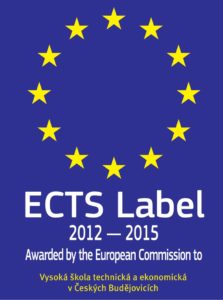When studying at a university students receive a certain number of credits for completing individual courses. The student gets a grade or a credit for every completed course to which credit points are assigned. The number of credits for a given subject expresses the time volume of the study activity needed to accomplish the subject, or simply it can be said that the number of credits represents the difficulty of the subject, thus it informs about the effort that will have to be developed to pass successfully.
Our school follows the ECTS – European Credit Transfer System – a system introduced under the Bologna Agreement of 1999, which aims to unify and integrate the European Union’s higher education system so that it is comparable. And it directly fosters student mobility which used to be common in European countries since the Middle Ages to the mid-20th century. Today it is still necessary , as it helps to transfer new knowledge and approaches, broadens horizons and thus it improves the quality of study. In order to be able to attend to a part of the study at another university even in the current conditions, it was necessary to introduce a comparable evaluation of the student’s performance. A year workload (about 1,500 to 1,800 hours) counts about 60 credit points, so one credit point represents approximately 25-30 hours. The workload includes both hours spent in classes, as well as studying individually. The student who successfully completes a course receives the appropriate number of credit points, regardless of the grade he / she receives.
Therefore, ECTS measures workload but does not classify its results.
The European Commission used to award ECTS Label to selected educational institutions declaring the correct use of ECTS. Being a holder of such a prestigious award was a mark of high quality for the school. VŠTE obtained this certificate in 2012-2015. This award is no longer awarded, but we still respect the established ECTS rules.

